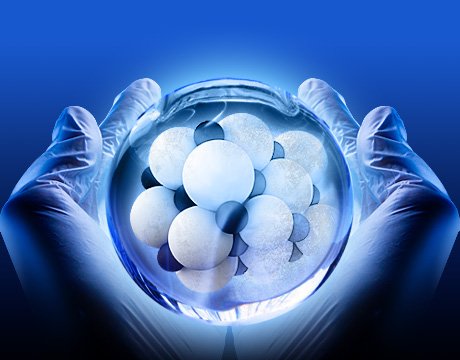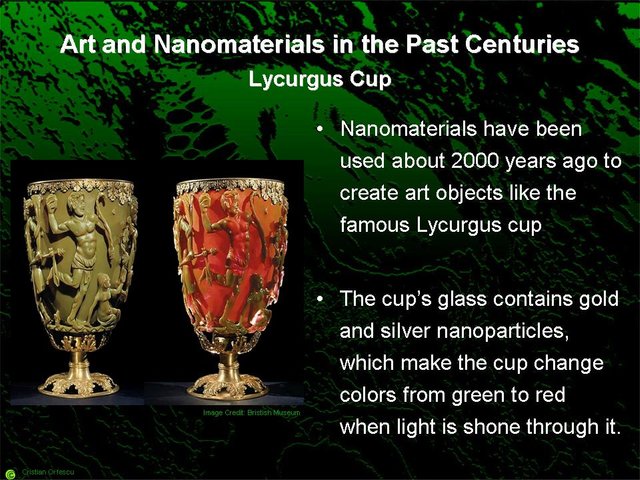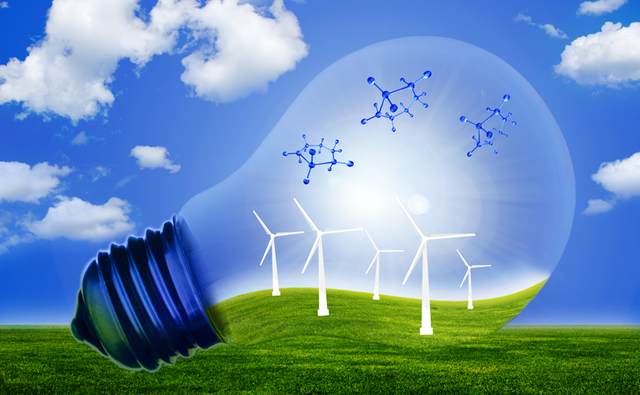
Source
The word "nanotechnology" may make us think that it is something current, a matter of a few days or even the future, but the truth is that this strategy of reaching the smallest dimension of a particle, to play with it, combine it with others and obtain a result that, by itself, Mother Nature does not offer, is possible and has been used for a long time.
Past
Clear example of this can go back to the ninth century, in the Mayan culture, where the "Mayan blue" comes from, which is a compound of organic matter and inorganic compounds, mainly indigo dyes derived from indigo leaves (Indigofera suffruticosa ) in combination with Palygorskite plants, a type of natural clay, smaller traces of other mineral additives that have also been identified. By themselves these compounds are a white powder, but the key to obtaining Mayan blue was the heating of clays with indigo at 150 ° for 20 minutes, producing a nanometric crystallization and, of course, that beautiful blue colorFor a long time it was study material, since, surprisingly, the properties of this pigment are that it resists the passage of time, acid, climatic conditions, biodegradation and modern chemical solvents.
Other cultures that made use of these mechanisms can be seen in:
• In the 4th century AD gold metallic nanoparticles were used for the first time to give color to the Lycurgus Cup: in the light of the day it presents greenish colors, and when it is illuminated from inside it acquires a reddish color, as you can see in the image.

Source
• Or for example in medieval times, where the color of the stained glass windows of the cathedrals was achieved by heating and cooling the glass, changing the size of its compounds and therefore its color.
I presented

Source
As we have seen before, there are several (there are many more) examples in the past about the use of nanoparticles to achieve special properties. Nowadays it is a subject of constant evolution and objective of the study because it can open the doors to many things: food, medicines, infrastructures, and even art.
According to Eric Gaffet, Research Director of the National Center for Scientific Research in France, he told the BBC in London that the use of nanomaterials for food is already in circulation and present in many foods for daily consumption. The effects of its use for the human body is still uncertain, but the truth is that there is no legislation that contemplates this issue so that industries are obliged to inform the consumer about whether or not they are consuming nanoparticles, as they are informed of whether they have been genetically altered (transgenic products).
Future
I commented on the use of these tiny particles in food, there are many industries that are investigating this for the future and offer products such as chewing gum in which the flavor lasts regardless of the time they are in our mouth, mayonnaise and ice cream with low content caloric but keeping the same flavor, soft drinks, yoghurts ...
The fields in which it is thought that will splash and invade this science are around:
- Stockpiling, Production, and energy conversion.
- Armament and defense systems.
- Agricultural production.
- Water treatment and remediation.
- Diagnostic and screening of diseases.
- Drug administration systems.
- Food processing.
- Remediation of air pollution.
- Building.
- Health monitoring.
- Detection and control of pests.
- Control of malnutrition in poor places
- Computing.
- Transgenic foods

Source
No doubt in the field where there is more hope is in the field of medicine, it could solve or cure many of the diseases that today there is no cure ... but we run into ethics: what benefits can something that cure diseases but without knowing, for sure, what may happen tomorrow?
It is quite clear that nanotechnology is the science of the future, and probably through rigorous laws and controls, is present in our environment tomorrow, but still presents a health problem, since its effects are unknown. Just as our ancestors resorted to the method of trial and error to achieve their objectives, now we must be more cautious, reflecting those potential problems we have in nuclear bombs with their potential and social repercussions worldwide.

Source
It is therefore that although its use in medicine, known as nanomedicine, is applied in order to obtain cures and improve the health of the human being, that the nanorobots on which all this would be based will not come to have total control. We are talking about self-replication: these little robots have not been applied at present, but what is most feared is that they can survive on their own and even reproduce. The way to avoid this is to cut their wings with energies that are not present, in abundance, in nature, as Ralph Merckle points out in the first nanotechnology conference of the Foresigh Institute: "To prevent this the nanorobot in the factory has to be always provide enough energy and parts, because otherwise as with bacteria the nanorobot could synthesize their own parts which would be very dangerous. "
It is seen that despite its great potential, we must be careful with its use: any error can alter these small, escape control of humans and represent a major public health problem, worse than viruses or even any other nuclear bomb never invented.
For more information visit the following links
Related Publications
- https://steemit.com/steemstem/@noirac/nanotechnology-and-its-application-in-the-food-industry
- https://steemit.com/steemstem/@giovaabbatichio/are-carbon-nanotubes-the-future-of-manufacturing
I hope you liked it, and that it will be useful, thank you for your time, do not forget to comment and, if you like, vote and follow me for more material like this. @noirac